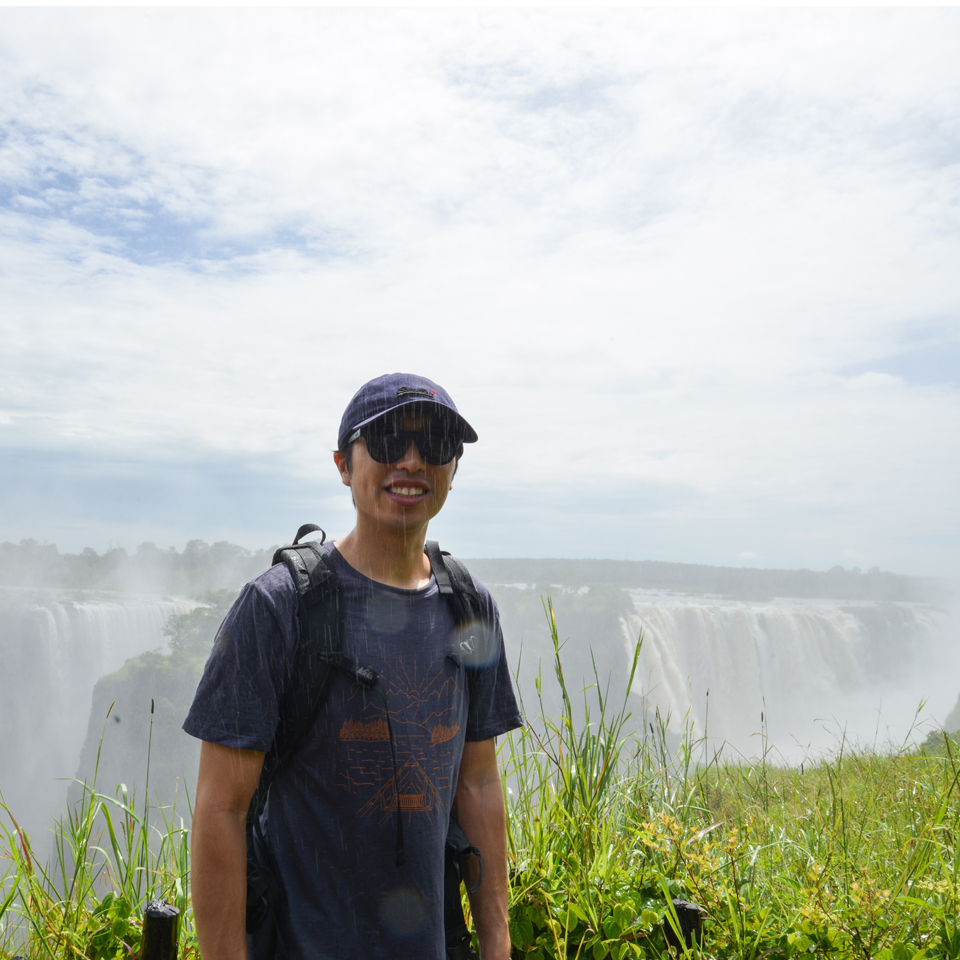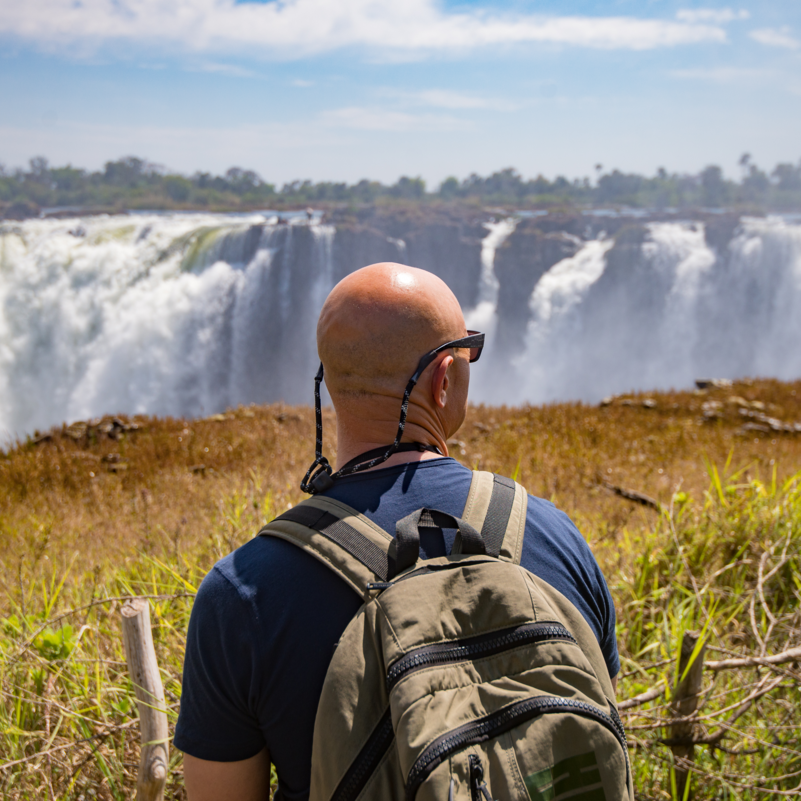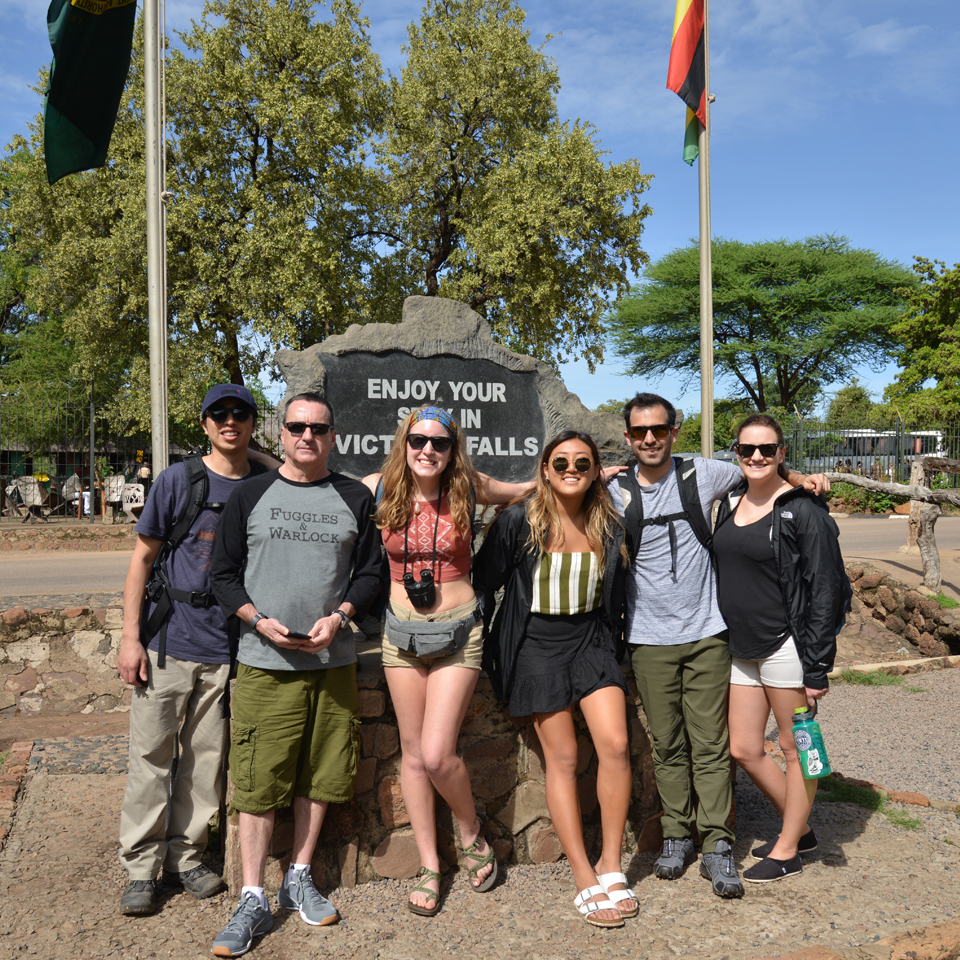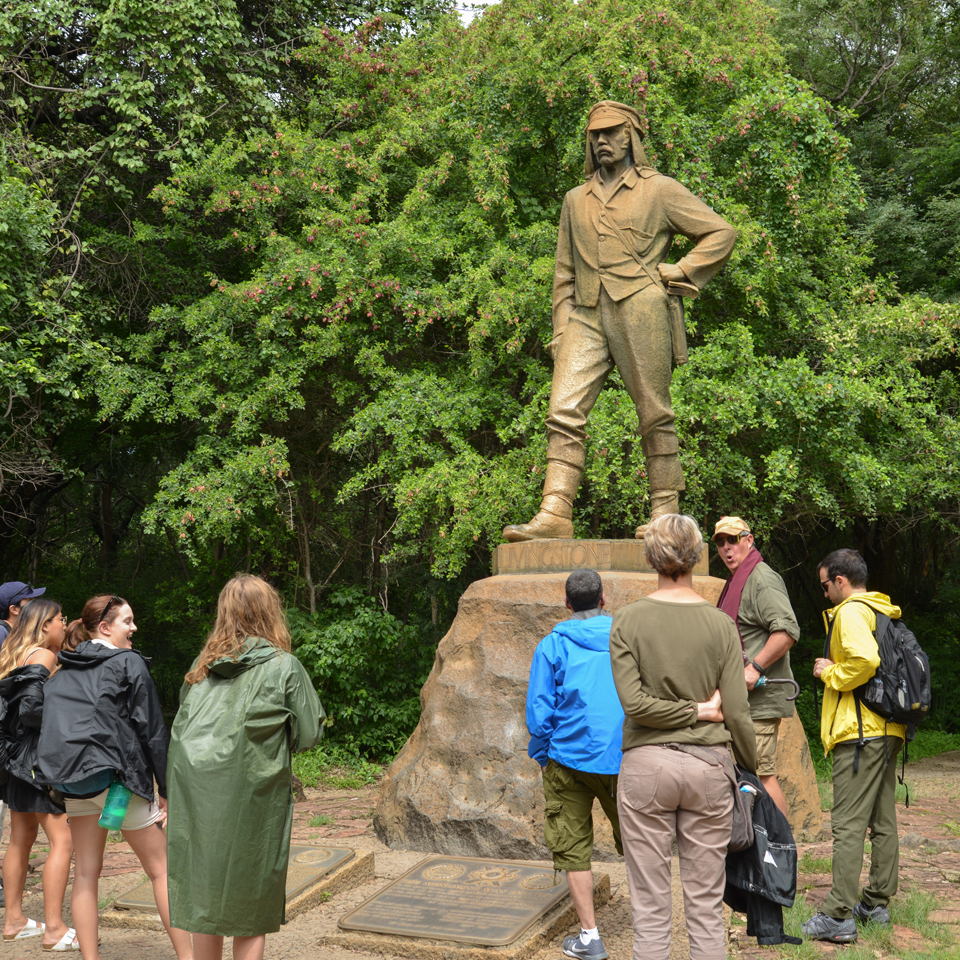David Livingstone, the Scottish missionary and explorer, is believed to have been the first European to view the Victoria Falls — which he did from what is now known as ‘Livingstone Island’ in Zambia, the only land accessible in the middle of the falls. David Livingstone gave the falls the name ‘Victoria Falls’ in honor of his Queen, but the indigenous name of ‘Mosi-oa-Tunya’ — literally meaning the ‘Smoke that Thunders’ — is also well known. The World Heritage List recognizes both names.
While it is neither the highest nor the widest waterfall in the world, it is claimed to be the largest. This claim is based on a width of 1,708 metres (5,604 ft) and height of 108 metres (354 ft), forming the largest sheet of falling water in the world. The falls’ maximum flow rate compares well with that of other major waterfalls.
The Zambezi basin above the falls experiences a rainy season from late November to early April, and a dry season the rest of the year. The river’s annual flood season is February to May with a peak in April. The spray from the falls typically rises to a height of over 400 metres (1,300 ft), and sometimes even twice as high, and is visible from up to 50 km (31 mi) away. At full moon, a “moonbow” can be seen in the spray instead of the usual daylight rainbow.
Victoria Falls is roughly twice the height of North America’s Niagara Falls and well over twice the width of its Horseshoe Falls. In height and width Victoria Falls is rivalled only by South America’s Iguazu Falls.




